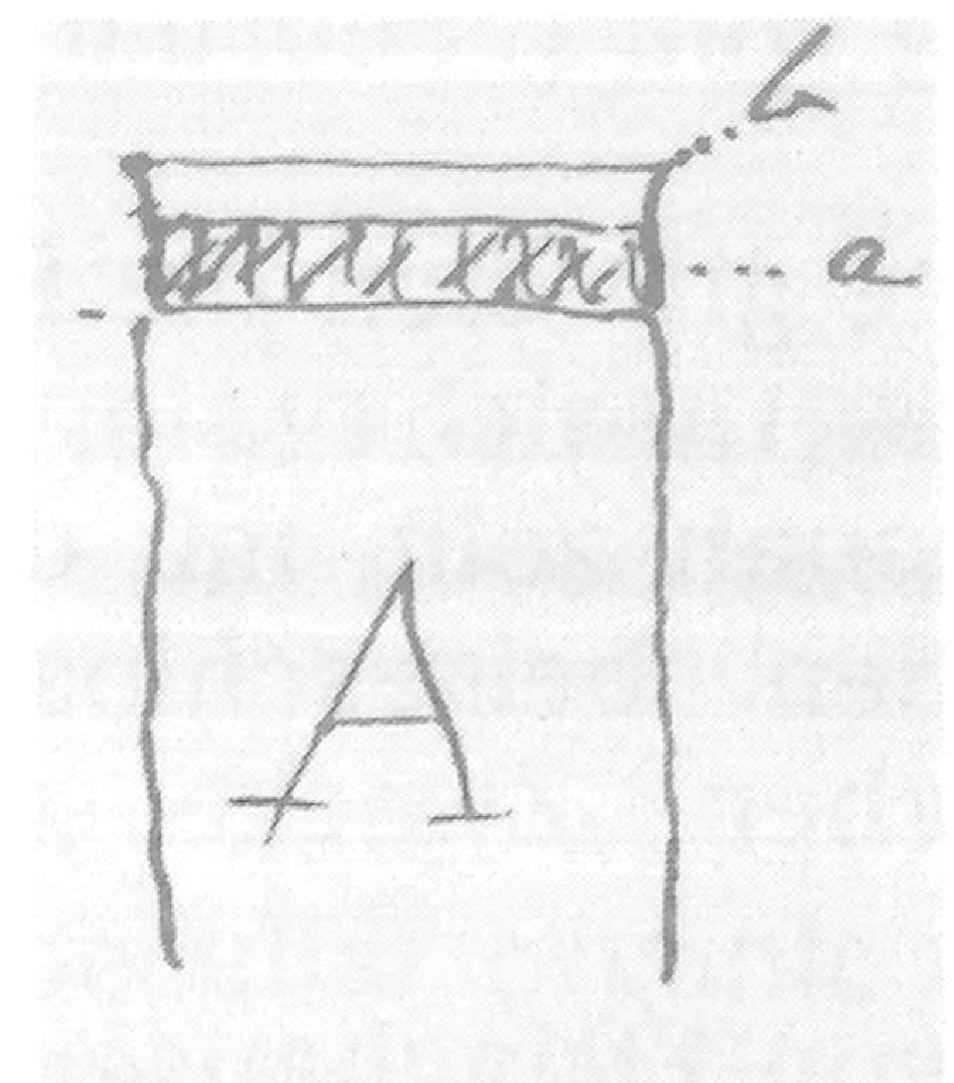William Henry Fitton to Faraday 3 March 18481
53 Upper Harley St. | Friday, 3d, March | 1848
My dear Sir,
There is at present in the apartment (or office) of Col. Alderson2 R. Engrs - at the Ordnance Office (who is just appointed, as one of the "Commissioners" of Rail-ways) - a "pile" of Elm Timber which exhibits some very remarkable changes produced by percussion.
 The pile (A) is guarded, at top by an iron ring (a) over which is about an Inch? <plusminus> of the wood (b). The pile was driven into the ground by a "monkey", weighing about a Ton, raised, to the height of about two feet by steam engine, & giving blows at the rate of about 80 blows in the minute. When the top of the pile was cut off, after the driving; it was found (as I am informed, in six instances,) that the wood within the iron ring was in the state of charcoal! - the then portion of the timber subjected to the blows above the ring & the pile below it being unchanged.
The pile (A) is guarded, at top by an iron ring (a) over which is about an Inch? <plusminus> of the wood (b). The pile was driven into the ground by a "monkey", weighing about a Ton, raised, to the height of about two feet by steam engine, & giving blows at the rate of about 80 blows in the minute. When the top of the pile was cut off, after the driving; it was found (as I am informed, in six instances,) that the wood within the iron ring was in the state of charcoal! - the then portion of the timber subjected to the blows above the ring & the pile below it being unchanged.
The charring seems to have been accompanied by a softening of the woody fibres - for there are foldings (like those of contorted geological strata) such as would be produced by squeezing flexible matter.

I do not know whether any flames or smoke, were observed during the driving (as, it would seem, ought to have been), but the whole case will be reported upon (I believe by Mr. or Capt. Simmons 3). And in the mean time one of the piles is now at 83 1/2 Pall Mall (West of the Ordnance Office), where you can see it.
My dear Sir | sincerely yours | Wm.H. Fitton
M. Faraday Esq
Please cite as “Faraday2059,” in Ɛpsilon: The Michael Faraday Collection accessed on 1 May 2024, https://epsilon.ac.uk/view/faraday/letters/Faraday2059